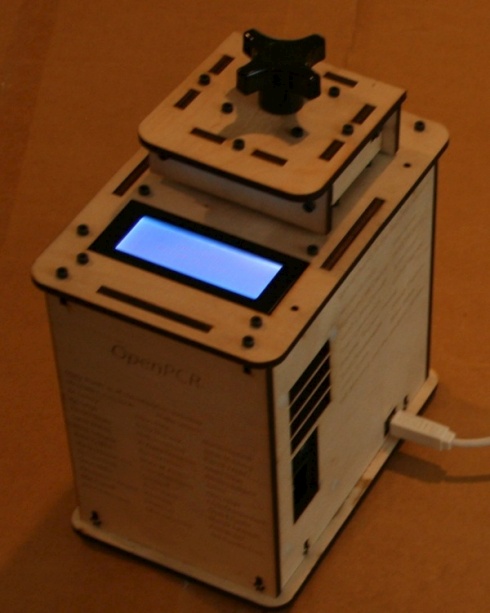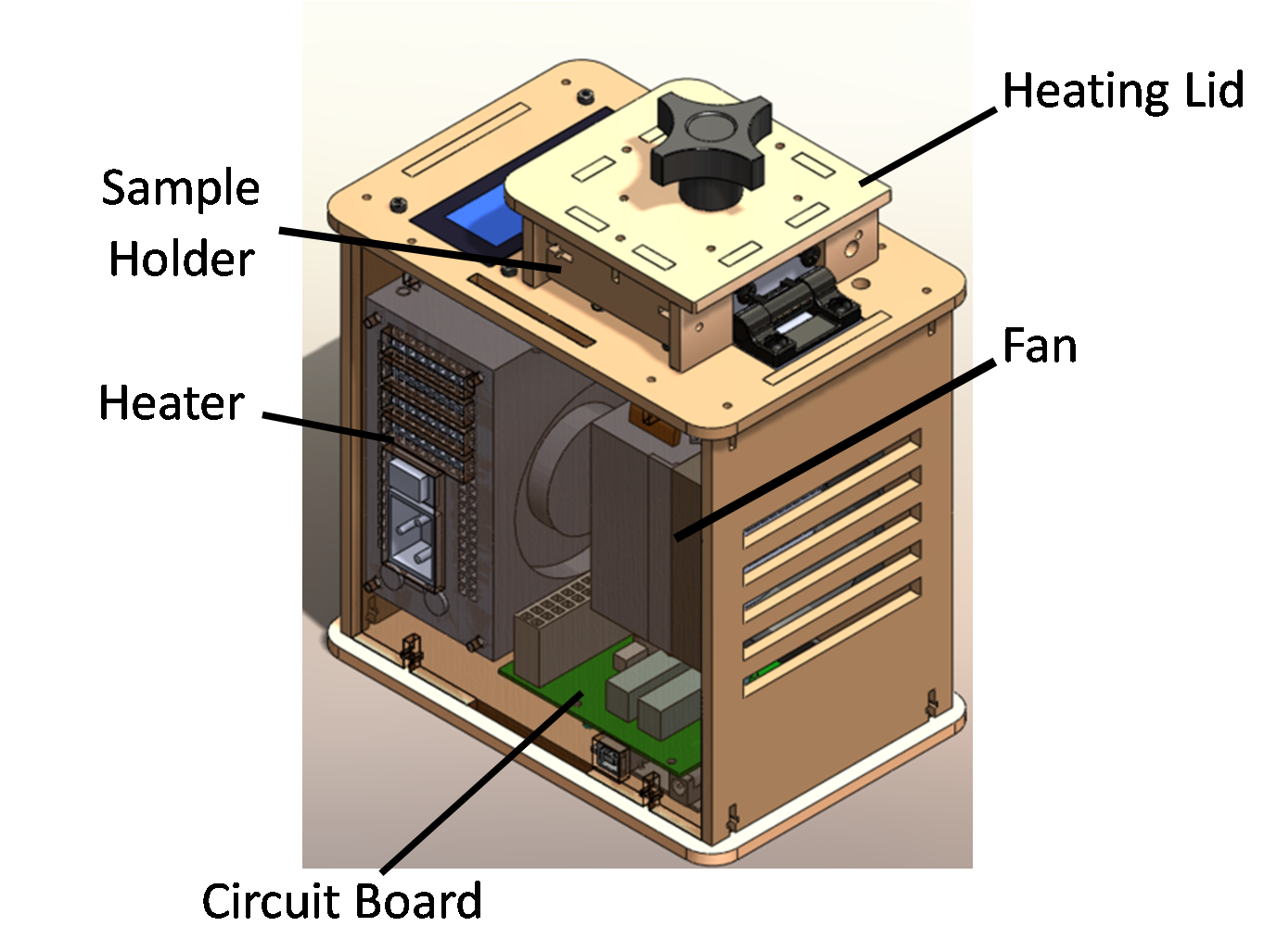BME100 f2013:W900 Group5 L4
| Home People Lab Write-Up 1 | Lab Write-Up 2 | Lab Write-Up 3 Lab Write-Up 4 | Lab Write-Up 5 | Lab Write-Up 6 Course Logistics For Instructors Photos Wiki Editing Help | ||||||||||||||||||||||
|
OUR TEAM
LAB 1 WRITE-UPThe Original Design Experimenting With the Connections After unplugging part 3 from part 6, we had discovered that the ,machines LCD screen was part 3 and the circuit board is part 6, and when that line was severed, the LCD screen turned off completely. Then when we decided to unplug part 2 and part 6 from each other heating was completely changed from one constant to another in degrees Celsius and essentially turned the heating component off within the open PCR machine. Part 2 is the heating device/core and part 6 is the circuit board and when they were unplugged the device when from 26.7 degrees Celsius to -40 degrees Celsius. Obviously all the connections to the circuit board hold a drastic importance to the Open PCR device.
(
ProtocolsThe purpose of protocol planning Protocol planning is important for many reasons, a few of which are elementary. Critical planning is put in place as the backbone that one will build upon. In other words, it is an outline of what should be done within a study or experiment or even simple things like how to label test strips. Without protocol planning experiments would contain too many variables and it would be much easier to make a mistake. Performing a study without protocol planning is like playing soccer without the rules. i.e. Protocol planning in this analogy would be the rules. In this lab we discussed the protocol for labeling test tubes along with the protocol of how to use the open PCR equipment. Protocol planning is of the utmost importance especially in a lab or while doing a study. Thermal Cycler Program
50 ul each Tap DNE polymers-the protein responsible for assembling the newly created strands. MgCl2 dntp's DNA/ primer mix
50 ul each DNA template (different for each trial) Forward primers (same for each trial) Reverse primers (same for each trial)
Research and DevelopmentPCR - The Underlying Technology What are the functional components of PCR? Template DNA is the a portion of the DNA that contains the target vector. There are two different primers that are attacked to are made to match each segment of DNA and copy it. One primer will attack to the top strand of the DNA and the other will attack to the bottom strand of DNA. The taq polymerase is an enzyme the synthesizes DNA to be complimentary to a target strand. New Strand can be generated by using the templates and primers. Magnesium chloride is used as a catalyst and the more MgCl that is used, the faster the reaction will occur. The different types of nucleotides are A,T,C,G. What are the different nucleotides? The different nucleotides are adenine, thymine, guanine and cytosine and the base pairs match up and arrange them selves in the fashion A<->T C<->G What are the phases of cycling? The primary step is for the thermo cycler to start at 95 degrees Celsius for 3 min, which separates the single strand template. Next step also retains the same amount of heat but for only 30 seconds to allow for the machine to denature the DNA. Next, 57 degrees Celsius for 30 seconds followed by 72 degrees Celsius to activate the DNA polymerase, which locates a primer and attaches itself. The final step for the cycle is to sit at 72 degrees Celsius to allow complementary binding, followed shortly by 4 degree Celsius to end the thermal cycling.
| ||||||||||||||||||||||




